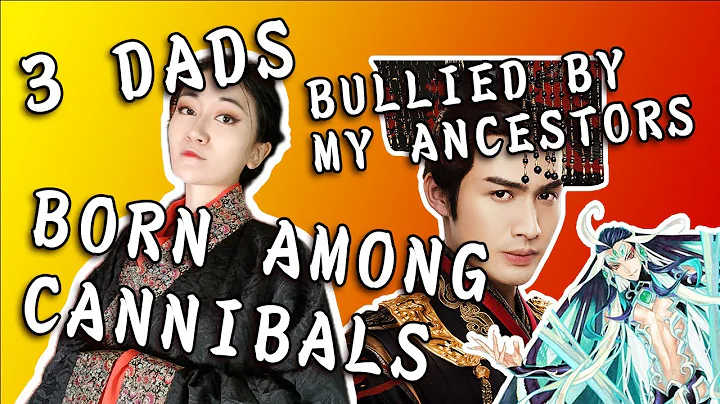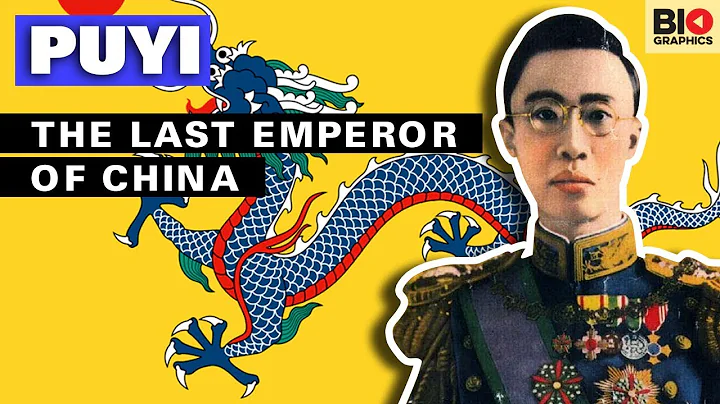The emperor refers to the supreme ruler of the country in China's two thousand years of imperial society, and is the symbol and representative of autocratic rule. From the time when King Qin Ying Zheng proclaimed himself emperor in 221 BC, to the abdication of the "last emperor" Puyi in 1912, China had a total of 422 emperors in the course of 2132 years of history.

As a symbol of power and wealth, the emperor has always been coveted by countless people. In the process of historical development, almost every change of dynasty will lead to countless bloody storms. "Emperors take turns, come to my house next year", "Princes and generals will be in love", all reflect different ways of changing the throne.
The replacement of Chinese emperors can be roughly divided into five types: natural abdication, abdication, suicide, homicide, abdication or forced abdication.

These five types can be divided into normal replacement and abnormal replacement, of which the former accounts for 2/3 and the latter accounts for 1/3. In other words, among the emperors of China, one out of every three emperors is abnormal. replace.
During the abnormal change of emperors, there were many people who obtained the throne by usurping the throne, including the founding emperor and the Holy Lord Mingjun. The most famous among them are Yang Jian, Li Shimin , Wu Zetian , Zhao Kuangyin , Zhu Di .

1, Yang Jian
Yang Jian was born in 541 AD in Huayin, Hongnong County. He was the eldest son of Yang Zhong, the general of Zhuguo in the Northern Wei Dynasty and the Duke of Sui.
In the first year of Xuanzheng (AD 578), Northern Zhou Emperor Xuan, Yu Wenyun came to the throne, and established Yang Jian's daughter Yang Lihua as queen. Yang Jian was successfully promoted to the state heir.
In February of the first year of Dacheng (AD 579), the six-year-old Emperor Jing of the Northern Zhou Dynasty, Yuwen Chan, ascended the throne and promoted Yang Jian to the position of prime minister.
When the emperor was young, he followed the Duke Yang Jian to have the idea of his grandson Yuwen Chan. In the first year of Dading (AD 581), Yang Jian forced his grandson Yuwen Chan to give him the Zen throne, changed the country's name to "Sui", changed the name of the Yuan Dynasty to Kaihuang, and was known as Emperor Wen of the Sui Dynasty in history.
After Yang Jian ascended the throne, he reigned for 24 years, destroyed the Chen Dynasty and Xiliang, and achieved unification of the world. He practiced frugality and clarified official administration, which greatly developed the people's livelihood economy. It is known in history as the prosperous age of the emperor. In the political system, the system of three provinces and six ministries was established, and the imperial examination system was created. During the feudal dynasty that followed for more than a thousand years, these two systems were followed by all subsequent dynasties until the demise of and the Manchu and Qing dynasties.

2, Li Shimin
Li Shimin was born in 599 AD. His ancestral home is Chengji, Longxi (now Qin'an, Gansu Province). He is said to be from Didao, Longxi (now Lintao County, Gansu Province). He joined the army when he was young and went to Yanmen Pass to rescue Emperor Yang of Sui Dynasty. He first advocated to raise troops in Jinyang, paid homage to the Commander-in-Chief of the Right Army, was granted the title of Duke of Dunhuang, led troops to conquer Chang'an, paid homage to Shangshu Ling and Doctor Guanglu, and was granted the title of Duke of Qin and Duke of Zhao . He contributed to the establishment of the Tang Dynasty He made great military exploits in unity, worshiped General Tiance, and was granted the title of King of Qin.
On the fourth day of June in the ninth year of Wude (626), Li Shimin launched the "Xuanwumen Incident", killing Prince Li Jiancheng and King Qi Li Yuanji, and was appointed as the crown prince. On August 9th, Tang Gaozu Li Yuan abdicated, and Li Shimin became emperor, with the reign name Zhenguan.
In the early days of Li Shimin's reign, he listened to the opinions of his ministers and accepted advice with an open mind. In order to govern the world internally, he practiced strict economy, encouraged farmers and mulberry farmers to achieve recuperation, peace and prosperity for the country and the people, and created the "Government of Zhenguan". It expanded its territory externally, conquered the Eastern Turks and Xue Yantuo, conquered Gaochang, Qiuci and Tuyuhun, and severely damaged Goguryeo. Four towns in Anxi were established to live in harmony with all ethnic groups in the northern region, and they were awarded the honorary title "HTKhan".

3, Wu Zetian
Wu Zetian, born in 624 AD, was the founding monarch of Wu Zhou . She reigned for 15 years and was the only orthodox female emperor in Chinese history. She was the oldest emperor to ascend the throne (67 years old) and one of the longest-lived emperors (82 years old). ).
Wu Zetian entered the harem when she was fourteen years old. She was a talented person of Tang Taizong and was awarded the title "武美". Emperor Gaozong of the Tang Dynasty was granted the title of Zhaoyi, and became the queen after the "Abolition of the King and the Establishment of Wu" incident. In the first year of the Yuan Dynasty, she was given the title of "Tianhou", and together with Gaozong, she was called the "Two Saints" and participated in the government affairs.After the death of Emperor Gaozong, the empress dowager who was Emperor Zhongzong of Tang Dynasty and Emperor Ruizong of Tang Dynasty was called Emperor Gaozong.
The first year of Tianshou (690), Wu Zetian proclaimed himself emperor, changed the name of the country to Zhou, made the capital Luoyang , called " the divine capital ", and established Wu Zhou. Before and after Wu Zetian came to power, he was "clearly aware and good at making judgments", had many powers and strategies, knew people well and assigned them well, attached great importance to the selection of talents, and created the palace examination, martial arts examination and official examination system. He also rewarded farmers and mulberry trees and reformed the administration of officials. At the same time, the Tang Dynasty clan members were massacred and "cruel official politics" emerged. Militarily, the four towns of Anxi were recovered and stabilized, and the post-Turkish surrendered for a time.

4, Zhao Kuangyin
Song Taizu Zhao Kuangyin, born in 927 AD, was the founding emperor of the Song Dynasty.
Zhao Kuangyin defected to Privy Councilor Guo Wei during the Later Han Dynasty and joined the army. When Chai Rong, Shizong of the Later Zhou Dynasty, was in power, he accompanied him in the Northern Han and Southern Tang Dynasties and made outstanding military exploits. When Chai Rong was seriously ill, he was promoted to the chief inspector in front of the palace and became the supreme commander of the Forbidden Army. He was ordered to resist the Northern Han and Khitan coalition forces.
was proclaimed emperor during the "Chenqiao Mutiny" and returned to Beijing to force Emperor Gong of the Later Zhou Dynasty to abdicate. In the same year, Zhao Kuangyin ascended the throne as emperor, changed the Yuan Dynasty to Jianlong, the country was named "Song", and was known as the Song Dynasty or Northern Song Dynasty in history.
During Zhao Kuangyin's reign, according to Prime Minister Zhao Pu's strategy of "first south then north, first easy and then difficult", he successively destroyed the Jingnan , Wuping, Hou Shu , Southern Han and the southern separatist regimes of the Southern Tang Dynasty. Completed the unification of most of the country. Through two " cups of wine to release military power ", the military power of the imperial generals and local vassal towns was removed, the centralization of power was strengthened, and the situation that since the middle of the Tang Dynasty was resolved that local military governors had supported their own troops.

5, Zhu Di
Ming Chengzu Zhu Di, born in 1360, the third emperor of the Ming Dynasty , Ming Taizu Zhu Yuanzhang's fourth son, Emperor Jianwen Zhu Yunwen's uncle.
Hongwu Three years later, Zhu Di was canonized as King of Yan. In the thirteenth year of Hongwu's reign, he conquered Beiping. In the twenty-third year of Hongwu's reign, he led his army to surrender Beiyuan Nai'erbuhua, and his reputation grew. After Emperor Jianwen came to the throne, he strictly implemented the reduction of vassals. In the name of serving Tian Jingnan, Zhu Di launched the Jingnan Campaign and raised troops to attack Emperor Jianwen. Jianwen conquered Nanjing in the fourth year of his reign and became emperor.
During the reign of Zhu Di, the economy was prosperous and the national power was strong. It was known as the "Yongle prosperous age" in history. Politically, the policy of reducing vassals was implemented to strengthen centralization of power; the official institutions were reformed and the cabinet and Dongchang were established. Militarily, he personally conquered Mongolia five times and occupied Annan; he actively managed the border areas, established the Nurgandu Division in the northeast, the Hami Guards in the northwest, and the Guizhou Provincial Envoy Division in the southwest. He actively managed the South China Sea area and controlled Tibet. Implement the policy of integrating education and administration. [Diplomatically, Zheng He was also appointed to sail to the Western Seas to strengthen friendly exchanges between China and foreign countries. In terms of culture, he compiled the "Yongle Dadian". He also dredged the Grand Canal and built the Forbidden City in Beijing.






















